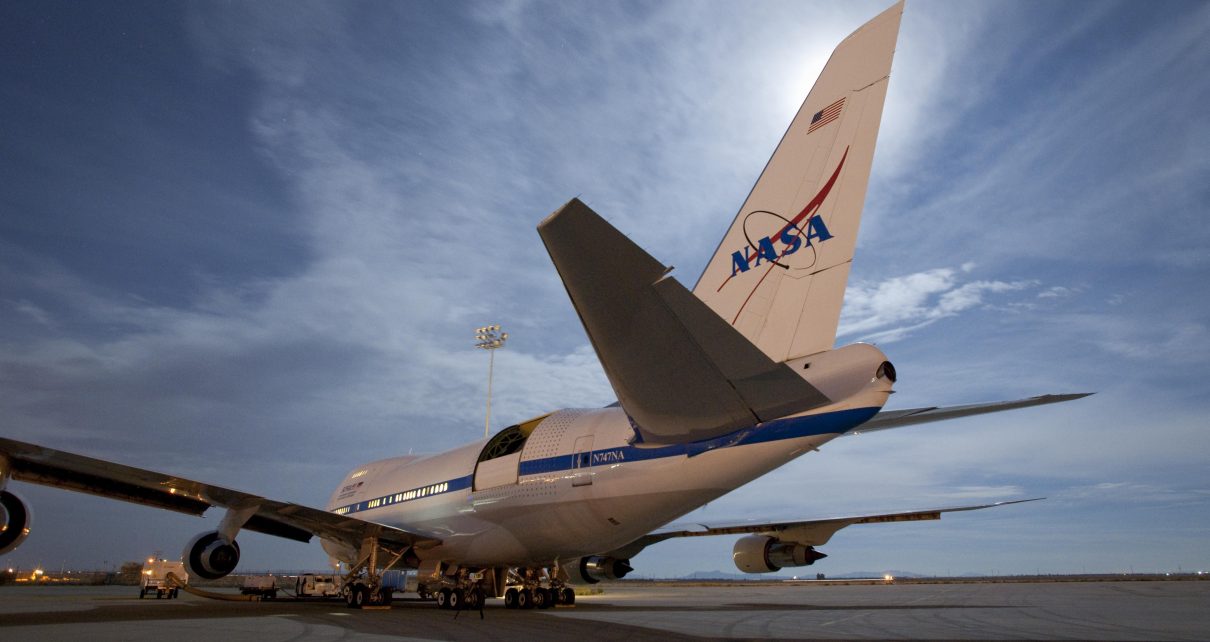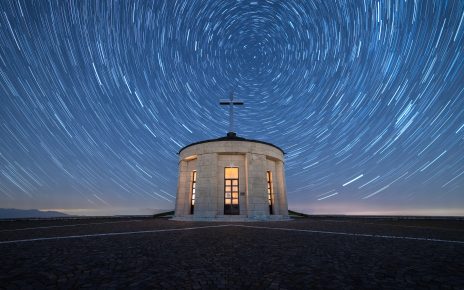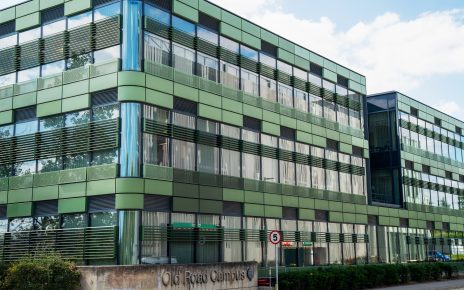Mountain View, California
On dozens of nights each year, NASA sends a jumbo jet carrying a 2.5-metre telescope into the sky. As it flies above much of the Earth’s atmosphere, this one-of-a-kind observatory—a US–German partnership known as the Stratospheric Observatory for Infrared Astronomy (SOFIA)—peers into the hearts of newborn stars and other astronomical wonders. It recently spotted, among other discoveries, the first type of molecule known to have formed in the Universe.
The unique vantage point puts observers above most of the water vapour in Earth’s atmosphere, allowing them to study celestial objects in infrared light that cannot be seen from the ground. But SOFIA, which costs tens of millions of dollars a year to run, has not been as impressive as many astronomers had hoped. Over its first 5 years of operations, from 2014 to 2018, it produced only 21 scientific papers per year on average—making it one of the least productive telescopes worldwide, according to one analysis.
And through a freedom-of-information request, Nature obtained a copy of a scathing review of SOFIA made last year by an independent panel. The report is heavily redacted, but confirms that the observatory falls far short of its goals, including one to produce more than 150 scientific papers per year.
“Certainly, SOFIA has not lived up to its potential,” says Paul Hertz, head of NASA’s astrophysics division in Washington, DC.
That’s not even counting the coronavirus pandemic that is upending lives and research around the globe. Because of the coronavirus threat, SOFIA has been grounded since the night of 12-13 March.
Fighting against time
The clock is now ticking for SOFIA to show its worth. In February, US President Donald Trump’s administration proposed permanently shutting down SOFIA, saying it had not been productive enough to justify its US$85 million annual cost to NASA. (Still, it’s unlikely that Congress will go with Trump’s suggestion to kill the mission. And Germany contributes another 20% to SOFIA’s budget.) It is the second-most-expensive astrophysics mission that NASA operates, behind only the Hubble Space Telescope.
“There’s a real challenge ahead, and the fuse is very short,” says Charles Woodward, an astronomer at the University of Minnesota in Minneapolis, who has done research using SOFIA. “They have to present a bold plan, and they have to execute quickly on that plan.”
SOFIA’s leaders are working to respond to two independent reviews conducted last year, one about the mission’s science and another about its aircraft operations. They are now racing to beef up the telescope’s scientific impact, such as by fine-tuning the time and location of flights to gather higher-quality observations. The project is also working to bolster the amount of SOFIA data in archives to entice astronomers to dig through past observations and publish fresh papers on them. Archival publications account for about half of the papers from high-performing observatories, such as Hubble.
“Our top goal is to improve impact and productivity,” says Naseem Rangwala, SOFIA’s acting project scientist at NASA’s Ames Research Center in Mountain View, California. “Let’s roll up our sleeves and get on with it.”
SOFIA usually flies from a NASA base in Palmdale, California, carrying a team of scientists and technicians to observe the skies for 8–10 hours per night. Occasionally, it relocates to New Zealand to study southern-sky targets, such as the centre of the Milky Way. By flying high in the atmosphere, SOFIA is able to make observations in infrared wavelengths that ground-based telescopes can’t see—and scientists don’t have to build and launch an entire infrared satellite into orbit.
Initially, SOFIA managers tried to maximize the number of hours it spent taking observations. But they scheduled the aircraft so efficiently that it started lots of different observation projects—and many never finished. Over SOFIA’s first 5 years, only 40% of the proposals designated as high priority were ever completed.
During the same period SOFIA produced an average of 21 papers per year, putting it second-to-last in a list that includes 29 ground-based telescopes and the Hubble Space Telescope. In terms of impact, as measured by citations, SOFIA came in last. Dennis Crabtree, an astronomer at the Herzberg Astronomy and Astrophysics Research Centre in Victoria, Canada, ran the analysis at Nature’s request.
A new hope
SOFIA’s publication rate is now starting to creep up, and last year it was 33 papers. The ultimate goal is 75 to 100 papers per year, says James Jackson, associate director for research at the Universities Space Research Association, the Maryland-based group that manages SOFIA. “More than 150 was a stretch goal,” he says.
SOFIA leaders have tried to bolster its relevance with special observing projects, such as by studying the red-giant star Betelgeuse after it began dimming unexpectedly in 2019, and by scouting for water deposits on the Moon that future NASA missions might explore. “This perception that SOFIA science is just not cutting the mustard—that’s not reality,” Jackson says. “We are producing world-class science.”
“For my research, SOFIA is essential—we get data that can’t be obtained any other way,” says Maggie McAdam, a planetary scientist at Northern Arizona University in Flagstaff, who has used SOFIA to study asteroids in mid-infrared wavelengths, which reveal information about how much water they contain. “My whole career is based on this.”
Yet SOFIA will face plenty of hurdles in the coming months. The coronavirus pandemic is likely to keep it grounded for some time and threatens a planned deployment to New Zealand later this year. Congress will decide on the fate of the president’s budget request, including whether to end the observatory. And the agreement that governs the US–German partnership on SOFIA expires at the end of the year and will need to be renewed.
“We’ve been forced to sit down and work out where we are—and in particular, where our science is,” says Bernhard Schulz, the top German representative on the SOFIA science team. “I’m fully convinced that this is a project very well situated and worth doing. But sometimes, you need these review efforts to come to that conclusion.”
This article is reproduced with permission and was first published on April 10 2020.



